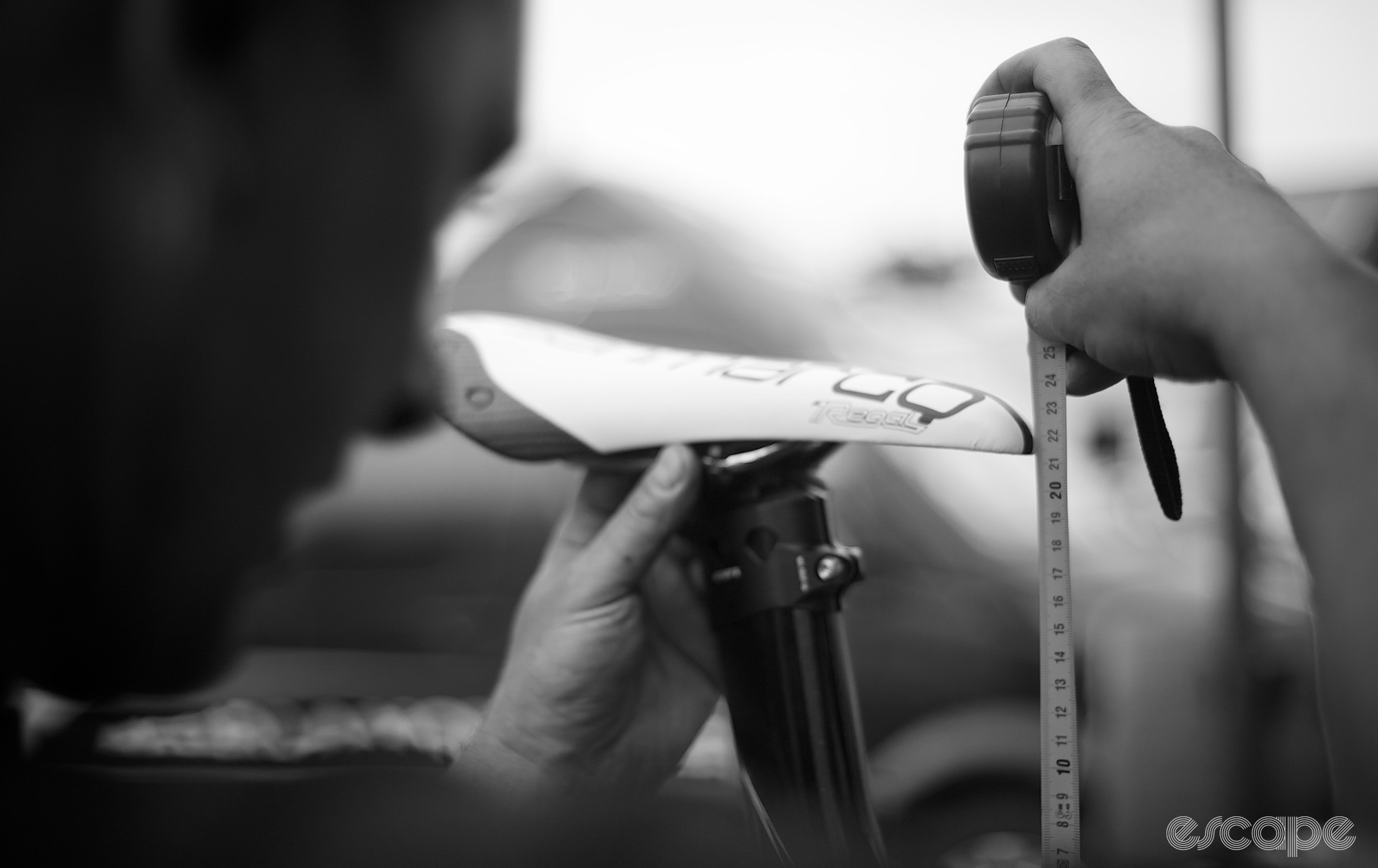Rolling out the door on a fair-weathered weekend morning means I’m quickly riding amongst countless others with a similar plan for the day. Many cyclists look joyful on a two-wheeled machine that whirs along. By contrast, you also see young and old with pained faces, often shifting around on the saddle in agony or dipping their head in and out of comfort.
This article will hopefully be useful for everyone who chooses to ride a bike, but most importantly, it’s designed to spread the word that riding a bike shouldn’t be a chore for your body. This isn’t a guide or how-to on the basics of bike fit; rather, it’s a look at a handful of commonly overlooked or poorly understood elements of bike fit.
Related reading: Things mechanics wish all cyclists knew about their bikes
Comfort before all else
Cycling is a beautiful sport that has long celebrated the joy of misery. No doubt there is a sense of euphoria in completing a difficult physical challenge, and doing so won’t always be comfortable.
That said, riding your bike shouldn’t cause pain or numbness in your joints, tendons, or extremities. Likewise, consistent foot, hand, neck, knee, or back pain often indicate that your interaction with the bike is problematic. The good news is that, in most cases, such cycling-induced discomfort can be overcome.
This is the wheelhouse of skilled bike fitters who specialise in how the body and machine interact. An experienced eye can go a long way to resolve issues quickly and, perhaps, prevent them, too. In my opinion, bike fitting is a somewhat under-appreciated profession. Much of this is due to confusion from some bike shops (certainly not all!) selling services labelled as bike fits that are little more than a basic bike-sizing process.
“A bike shop will often make sure they sell you the right-size bike and within 20 minutes or less set your seat height the best they can to get you going. That is a sizing,” explained Mike Flartey, fit technician and owner of Aloha Friday Wheelworks in Oahu, Hawaii.
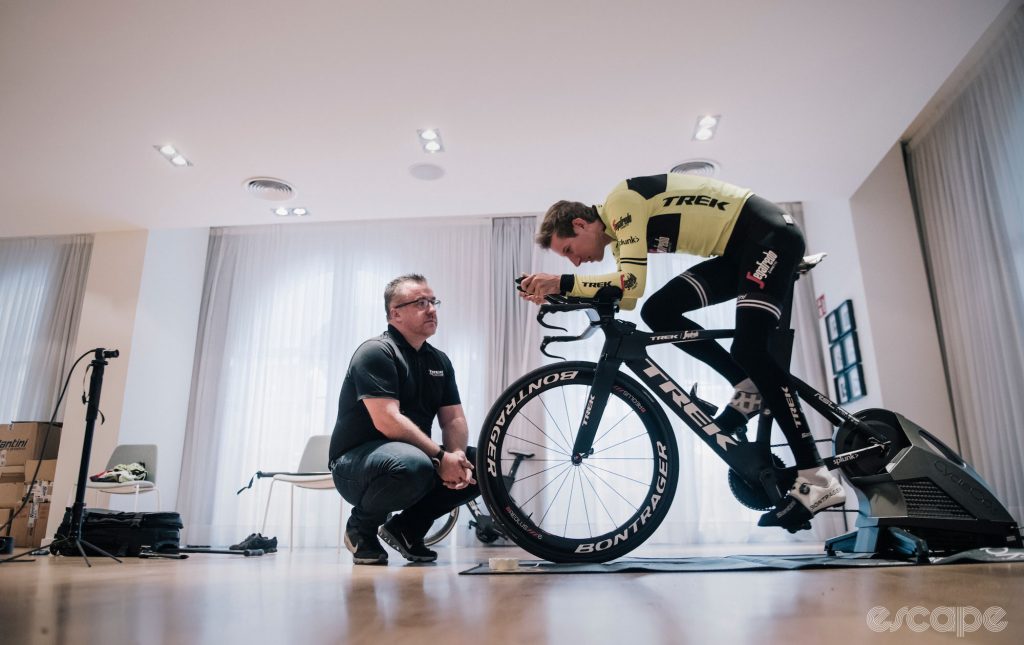
John Karrasch of Flexfit in Birmingham, Alabama, offered a similar response when asked what he believes is the most common misunderstanding concerning bike fit. “A bike fit is something you pay for separately and should be a couple-hour process,” he said. “Sizing is a quick process with someone helping you pick the right size bike.”
Flartey also said that a true fitting session will often take multiple hours, commonly with a follow-up appointment. In that time, it’s normal for a fitter to do a full physical and structural exam looking for imbalances and flexibility limitations. Prior injury history, current fit concerns, rider skill level, and riding goals are all important details to a fitter, too.
Now not everyone needs a bike fit, and those who feel efficient, comfortable, and worry-free on a bike are likely already in the right ballpark of fit. However, I’d argue that it’s just as common for people to ignore those little niggles (which eventually turn into bigger niggles) and forgo spending the time and money to be comfortable and efficient, all while prioritising spending thousands on a new bike, a new wheelset, or some other cycling-related item.
Depending on where you live, you may struggle to find yourself a great bike fitter. Word of mouth is important here, and generally, good bike fitters will often shine through with praise from local riders.
Some symmetry is important
A bicycle is designed to be a symmetrical vehicle. The wheels should sit in line with the centre of the rider. The handlebars should align squarely with the front wheel. The saddle should provide an even perch across its width.
The topic of symmetry gets complicated quickly, though, when you consider that most people aren’t symmetrical. Limb length discrepancies, previous injuries, or just sleeping funny can all cause us to sit a little wonky on the bike. I won’t dive down this rabbit hole today, but instead, I’ll focus on unintentional asymmetry.
So often, people ride bikes unintentionally and are unaware of saddles a little askew or perhaps collapsed on one side. The cranks may be offset more to one side of the bike. Brake hoods are commonly not even left to right, either from slipping or by being misaligned due to too much trust in the handlebar’s alignment markings. Cleats can slip on the shoe to become wildly out of position. And it’s even common to see riders compensating through the back and shoulders for something as simple as a misaligned handlebar.
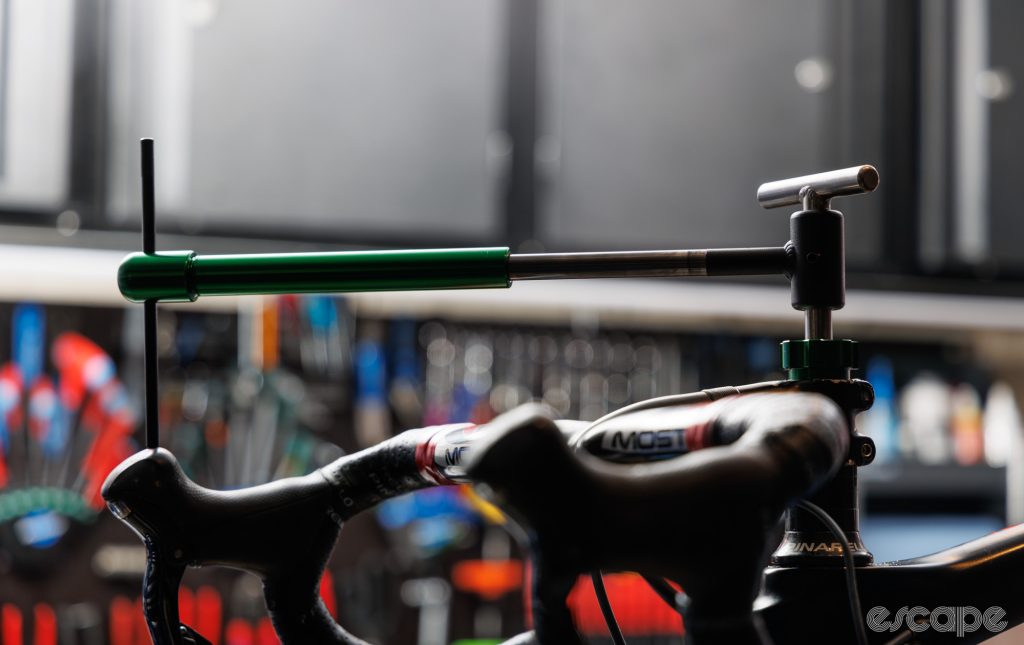
Some of these things may need to be offset asymmetrically to overcome a specific fitting need, but for most riders, they should be symmetrical. Riding with anything unintentionally offset or asymmetric means your body creates an imbalance to match it. Sometimes your body will do well to hide it, other times, it’ll present as an issue.
The simple answer to this complex topic is to have a skilled mechanic or fitter check over the bike with instructions to ensure everything is even (unless you know it shouldn’t be). You’ll be amazed at how different eyes may see things you’ve long since adapted to.
Stewart Morton from Melbourne-based RiderFit previously suggested to me that it may not even be the bike you need to look at. How many of you have put a spirit level across the back of your indoor trainer to ensure you’re not training with your bike on an angle? Any angle beyond zero means unbalanced muscle recruitment.
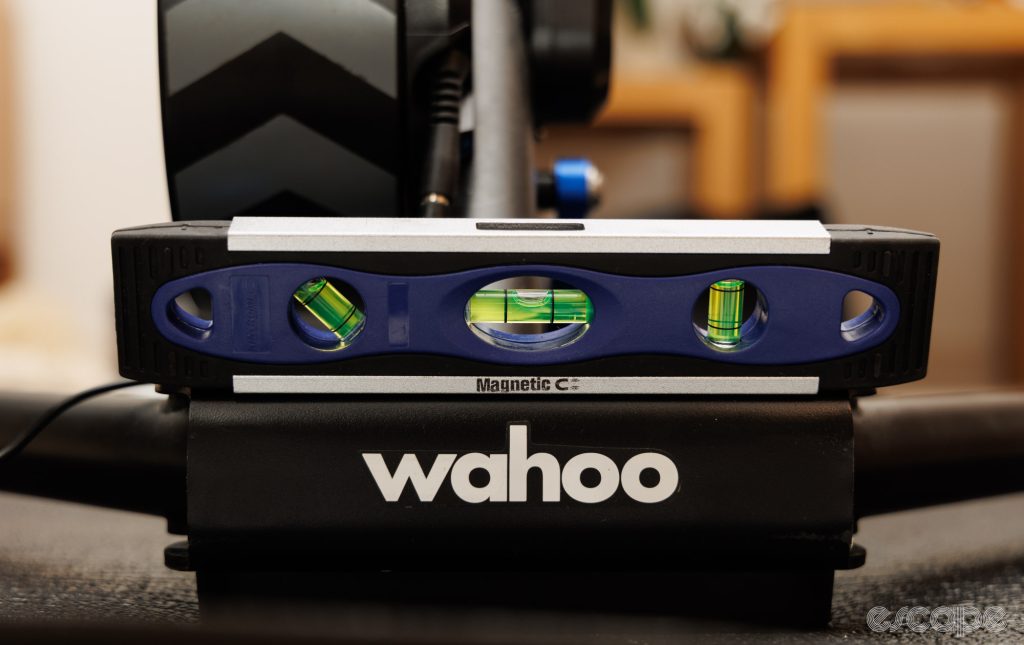
Small changes make big differences
Another common mistake when fitting a bike is to make too big an adjustment. “A lot of people will say they’ve played around with saddle height, and when I ask them how much they adjust it by each time and they answer ‘a few centimeters’ or ‘10 mm’,” said Jon Wild at Pedalling Perfection, located between Bath and Bristol in the UK. “There’s no way you can land on the right saddle height if you adjust it by such a large amount.
“The tolerances for pairing a human with a bicycle are actually quite small. It can be plus or minus 1.5 mm for saddle height, and 3 mm for saddle setback. I work with a wide range of clients, and it never stops amazing me just how consistent these tolerances are. One rider could be 6’7″ (200 cm) vs another at 4’11” (150 cm) – sprinters to ballerinas – and we can still detect compensations as we deviate away from the optimal by as little as 3 millimetres.”
If making changes on your own fit, it’s also important not to do too much at once. “As tempting as it may be to make multiple adjustments in one clean sweep, focus on changing one thing at a time to isolate and better identify what works,” said Escape Collective’s own fit-fettler Ronan Mc Laughlin. “Take cleats as an example; if you’re experiencing hot spots on your feet, adjusting the fore/aft and/or stance width may help. But adjusting both at once may solve one issue while creating another with no obvious way to tell what has helped.”
Adjust one thing and see what difference it makes – that way, you’ll know exactly what needs to be reversed if the results aren’t positive.
Levelling that saddle
It’s common for many bike fitters to set a saddle level to the ground. “This contact point has a lot of flow-on effects (not just blood flow),” said Sydney-based fitter Tom Petty of Embassy Cycles. “If the saddle is too nose down, you’ll constantly push yourself back up and overload the hands. Too nose up and you can cause the pelvis to rotate back and add pressure on the lower back, not to mention adding pressure to other sensitive areas.”
Adding to this, and according to Eddie O’Dea of Cycle Techniques in the Atlanta region, many people level their saddles incorrectly when considering that the rear of a saddle is often raised in its profile. “[You should] level the front half of your saddle, not nose to tail. The tail end of the saddle is not where you sit, it’s more forward than that.”
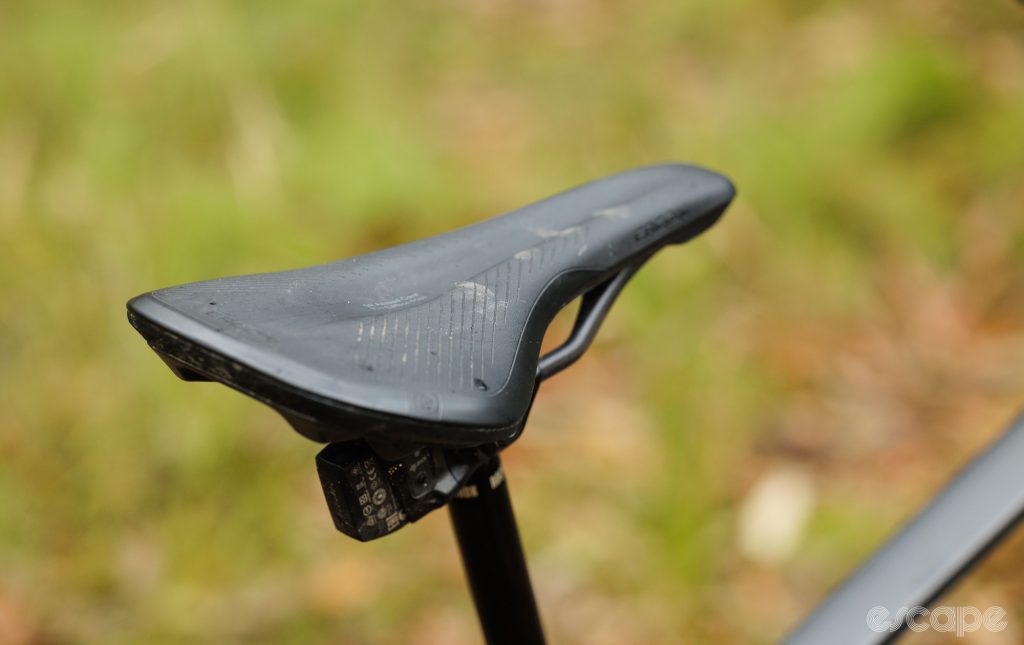
Speaking of a saddle that has a common concave shape along its level, O’Dea added, “if I levelled the saddle tail to nose, then the front half would be angled upward. If it’s up, then you’ll either go numb from the pressure on the pubic bone, or it’ll roll your hip back like you are tucking your tail. That will bow your back, and your low back will get sore. Neither is a good choice.”
Instead, O’Dea’s advice is to measure the tilt of the saddle from approximately the midway point to the nose. Of course, for the rare few saddles that are perfectly flat across their entire length, then this tip isn’t one to worry about.
It starts at the feet
If you’ve never had a bike fit you’ll likely be surprised at how much time is spent dialling your foot position in relation to the pedal. Given the shoe-to-pedal interface is the base to delivering power, it then shouldn’t be all too surprising to know that it often acts as the puppeteer to the limbs that extend upward.
I wrote above about the importance of symmetry, but the foot-pedal interface is one area where such symmetry is only suitable for a rare few. Instead, most riders benefit from having their cleat position tailored to each foot (and leg). And such individual adjustment extends well beyond the cleat position.
“A common yet understated issue is the relationship between the feet and the shoes,” said Tim Dougherty from FitFirstSolution. “The width of the shoes is just as important as the length. If the width of the shoes is ill-fitting (commonly too narrow), it impacts more than just the delivery of force through the pedal stroke.”
Using a shoe too narrow most commonly presents itself as foot discomfort or numbness, but how the foot is held can often extend into knee or even hip alignment issues.
Your reach is probably too long
For decades it’s been considered ‘pro’ to be long and low on the bike, but how many of us do the off-bike body maintenance required to ride such a position efficiently? In many cases, being more upright isn’t just more comfortable, it allows more efficient muscle recruitment and even allows a rider to hold a more aerodynamic body position when needed.
“The vast majority of people are probably faster on un-slammed stems,” explained San Diego- and Seattle-based fitter Max Haggard. “It’s better to run a slightly taller stack, and bend your elbows rather than run your bike all the way slammed and have your elbows locked out.”

Similarly, it’s common to see most people riding bikes with a reach to the bars that is too long for them. Some tell-tale signs of this are if you ever feel the need to scoot onto the nose of the saddle in order to reach the bars comfortably, if you ride with fingers resting on the tops of the bars rather than your palms, or if you struggle to stay in the hoods for an extended period of time.
Finding a bike with a comfortable reach and stack starts with picking an appropriate frame design and frame size. It’s perhaps a tough pill to swallow, but most who work a 9-5 office job would benefit from avoiding products designed for pro racers.
And that brings me to one of the most common mistakes people make when seeking more comfort: using the saddle position to impact your saddle-to-handlebar relationship. “I find a lot of people are trying to manage their handlebar position by using the saddle position as it’s the easiest and most obvious one to adjust,” explained Jon Wild.
“Lowering the saddle raises the bars making the position feel more relaxed. The problem is that you are then riding at the wrong saddle height and your lower limbs are compromised. The same is true for increasing or decreasing reach by adjusting saddle fore-aft, which then impacts your pedal stroke and centre of mass on the bike, not just the reach to the bars.
“This also works in reverse – our brains are easily deceived, and you can often feel like your saddle is too low if your bars are too high. I think this is the biggest reason why fitting yourself is so difficult. Too many misinterpreted feelings,” concluded Wild.
Contact points wear out
Your most sensitive contact point with the bike, the saddle, will eventually wear out.
When wearing through, some saddles will first lose stiffness in the plastic shell beneath the padding. When this happens, the saddle sags in the centre and increases pressure where you don’t want it. In other cases, the padding of the saddles will wear, often on a side you favour and therefore only furthering the imbalances many of us have in our bodies.
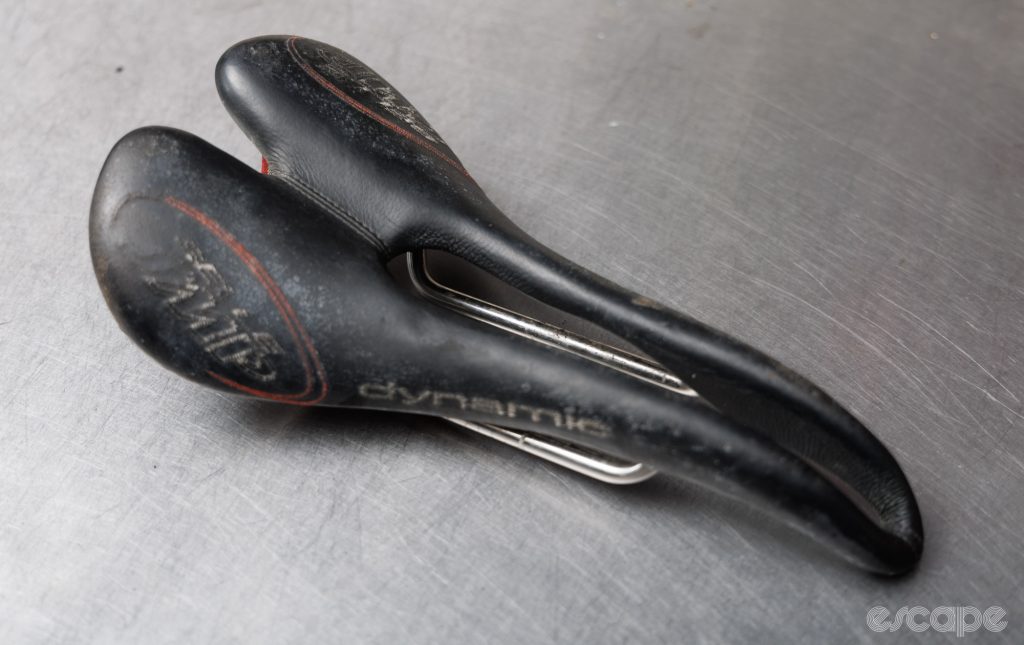
Similarly, the materials in your cycling shorts won’t last forever. Sagging lycra or compressed chamois pads can quickly irritate the skin, or worse, the eyes of onlookers. Once your shorts/bibs don’t fit as snugly as you remember or the chamois isn’t as bouncy, it’s time to retire them. And retirement doesn’t mean using them only indoors – the stagnant and high-pressure nature of indoor cycling means you benefit from using your best bibs, not your worst.
Wear certainly applies to your pedals and shoes, too. “Pedals and cleats wear out far quicker than you realise and are a common cause for a lot of new knee pain on an otherwise good fit,” said Tom Petty. “If you clip your shoe into the pedal and see it rock laterally (not the normal float way but rather the heel of the shoe rocking on an X-axis), this is commonly cleat wear. If your cleat is new and this still happens, it’s your pedal. If your road cleats and pedals are new, and this still occurs, then it’s probably because the cleat interface of your shoe is bad.”
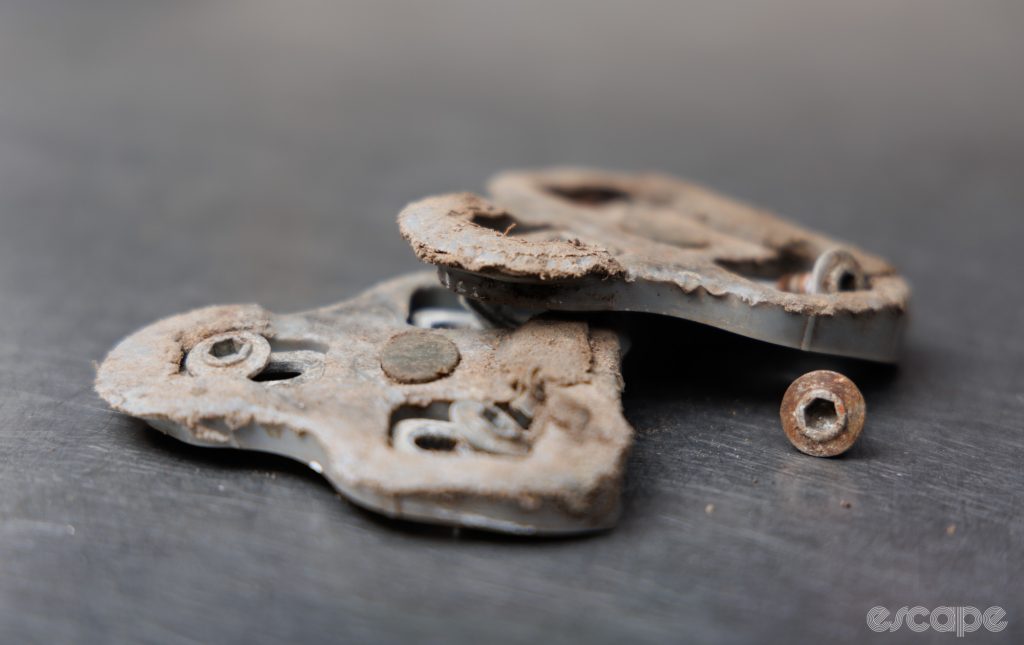
On the topic of wearing things out, it’s important to remember that changing any contact point is likely to cause changes to the fit you’ve become accustomed to. A subtly different saddle model, a new pair of shoes, or a different brand of pedals are all things that will change how your body interacts with the bike.
It’s often not about the bike
Niggling pains and aches often have many of us seeking a quick fix with a saddle height adjustment or raising the handlebars. The unfortunate truth is that many of the niggles exist because of how we spend our days. And just like how your bike runs better with preventative maintenance, so does the body.
Los Angeles-based fitter Lauren Mulwitz of Dialed In Fitting pointed to some fundamental muscles that too many cyclists don’t activate. “I think being mindful of engaging the core and recruiting the glutes are important,” she said. “Even if someone’s bike fit is pretty dialled, the way they sit on the bike, and the muscles they recruit are sometimes not optimal.
“I try to go over engaging the core and being mindful of the pressure cyclists put on their hands (since hand numbness is a common ailment among riders). I also encourage people to be less quad-dominant and pull through the bottom of the pedal stroke, engaging their posterior chain and increasing glute activation.”
“Many riders focus on the bike fit to get comfortable when the best bang for your buck is to work off the bike,” added Mick Cupitt of MC Bodyworx in Sydney. “Anything you can do to improve your stability, muscle imbalances, flexibility and strength will pay off greatly in how you feel on the bike.”
Sadly, such gains and benefits are only realised by putting in the effort and time off the bike, but speaking from personal experience, it can be the difference between being able to ride a bike in comfort or not at all.
An endless world of nuance
While many bike fitters share common thoughts over what they wish more people would know, fundamentally, finding comfort and efficiency on a bike is a highly individual thing, often with a lot of nuance.
In the simplest sense, what works for one person really shouldn’t be used as a guide for what may work for another. One key takeaway from this article is that cycling can be challenging and even uncomfortable, but riding a bike shouldn’t result in any injury-like discomfort or pain.
What did you think of this story?
